Today we are going to review Apple iPad Pro 2020 and Magic Keyboard. The launch in 2018 added interesting new features to the “Pro” family, but above all it represented a design change aimed at reducing its total volume, as well as its thickness and weight, thus achieving a more manageable device than the previous generation.
Apple iPad Pro 2020 and Magic Keyboard review
In this review, we will write all the new features of the iPad Pro 2020 based on the 12.9-inch model, but also review a new companion, the Magic Keyboard, which joins the Smart Keyboard Folio in Apple’s keyboard offering and makes it a perfect companion, not forgetting the Apple Pencil.
Liquid Retina display
The 12.9-inch iPad Pro 2020 maintains the same dimensions, weight, and form factor as the 2018 version: 280.6 x 214.9 x 5.9mm, as well as 651 grams of weight in the WiFi-only model and 643 grams on the WiFi + Cellular.
As for the screen, it maintains the Liquid Retina, an LCD of 2,732 x 2,048 pixels at 264ppi that through a process called sub-pixel antialiasing allows to round the corners by adjusting the pixels one by one to eliminate the distortion of the ends.
- New Apple iPad Air introduced: price, features, release date
- iOS 14: all news, compatible devices and how to install it
- Here is the 8th gen 10.2-inch Apple iPad: price, specs, release date
This Liquid Retina displays bright (600 nits) and realistic colors thanks to the support of a P3 color gamut, not to mention the True Tone technology with an anti-reflective coating that dynamically corrects the white balance for more natural tones while not increasing the visual fatigue, so common when we spend a lot of time in front of a screen.
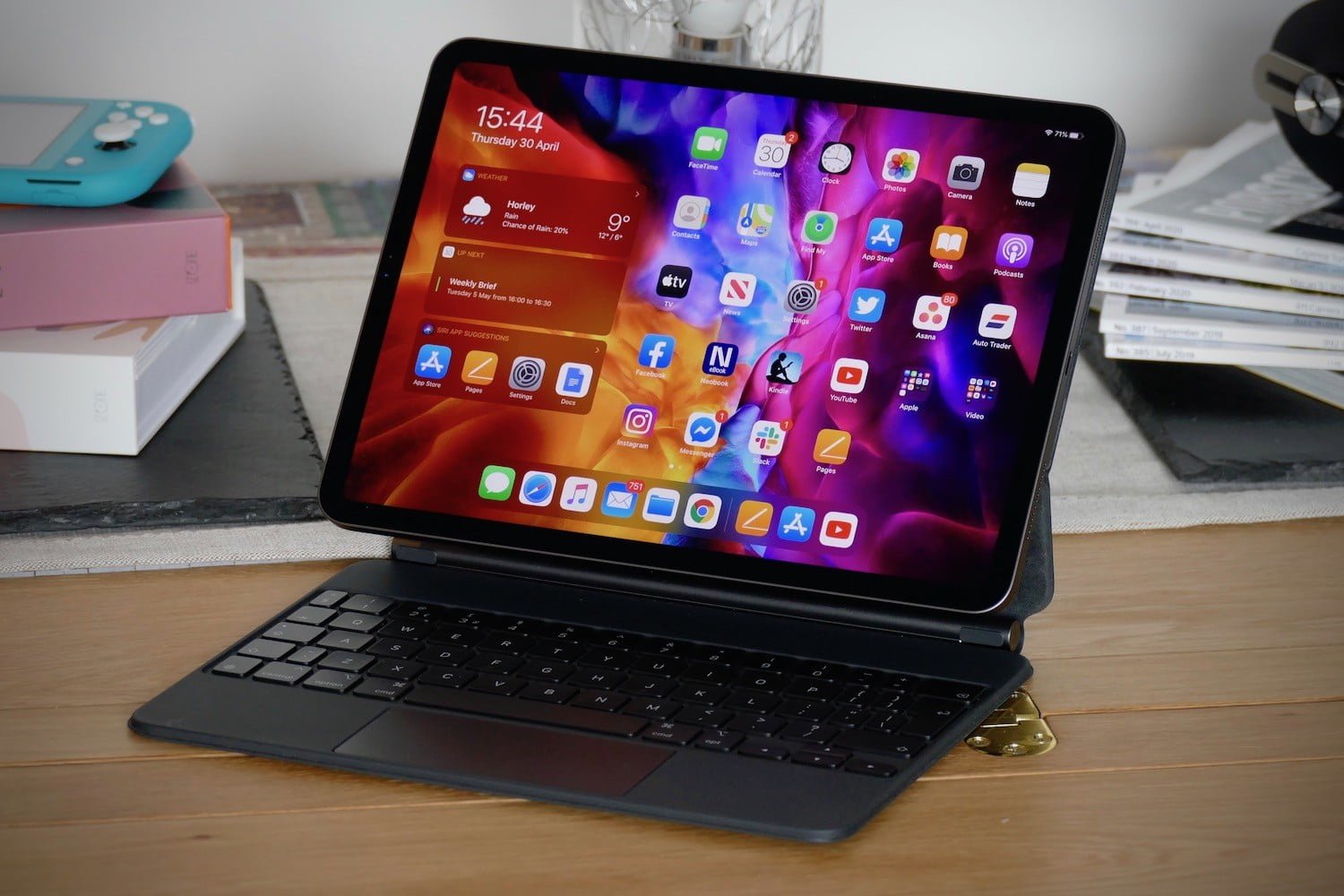
Another detail to take into account is the ProMotion technology, which automatically adjusts the refresh rate of the screen up to 120Hz, providing an incredible response when we move through it with our finger or Apple Pencil. In addition, it has an oil-repellent anti-fingerprint cover.
A12Z Bionic chip is a big step
In the presentation keynote of the iPad Pro 2020, they wanted to make it clear that its new A12Z Bionic chip makes this device faster than most Windows laptops on the market thanks to its eight-core processor. In any case, it is in the graphics processor where the only difference with the previous model, the A12X Bionic, is found, since the latter had seven graphics cores, only one less than the current one, which has eight, so the Performance results are very similar between the new iPad Pro and the previous generation.
Apart from similarities between both chips, the speed with which the iPad Pro opens applications, reacts to gestures, recognizes our face with Face ID is very remarkable… Its eight-core design allows four of them to provide maximum performance in more tasks demanding and the other four remaining cores focus on daily tasks that demand a lot of efficiencies. Its performance controller dynamically splits work between these cores but takes advantage of all eight when a power boost is needed.
As for the Neural Engine in the A12Z Bionic, it has been built for advanced Machine Learning tasks because it can complete up to 5 billion operations per second. Machine learning in image and video recognition, in the identification of environments in Augmented Reality applications, in the use of Face ID, or even in the creation of a more expressive Memoji thanks to the fact that it can map up to 50 facial gestures justify Neural Engine.
Cameras and sound
When we turn around the iPad Pro 2020 we find the main external difference with respect to the previous model, I mean the addition of two new wide-angle and ultra-wide-angle cameras very similar to those on the iPhone 11 and iPhone 11 Pro.
The wide-angle camera is 12MP and aperture of f / 1.8 (the same as that of the iPhone 11), but it lacks optical stabilization and night mode, perhaps because Apple has not considered the iPad Pro as the most suitable device to take. photos of this type. Regarding the ultra-wide-angle camera, in the iPad Pro, it is 10MP (compared to 12MP in the iPhone 11 family), aperture f/2.4, and field of view of 125º (five degrees more than in the iPhone 11).
Other features of the iPad Pro 2020 camera system are 2x optical zoom out and digital zoom up to x5, five-element lens, brighter True Tone flash, ability to take panoramic photos up to 63MP, cover from the sapphire glass lens, the backlight sensor, the hybrid infrared filter, the autofocus with Focus Pixels (wide angle), the exposure control or the possibility of using the burst mode.
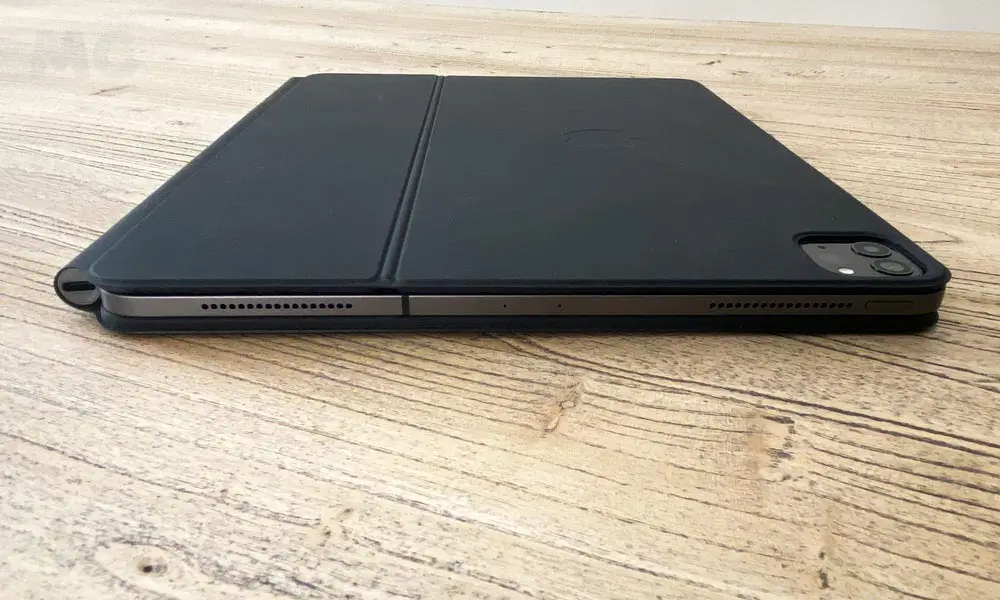
What remains with respect to the iPhone 11 family is video recording in 4K at 24, 30, or 60fps (wide angle) and 60 fps (ultra wide-angle), as well as video recording in slow motion at 1080p at 120fps or 240fps (ultra wide-angle).
In terms of sound, a fundamental complement for video recording, the iPad Pro 2020 incorporates five microphones to record audio with great clarity even at very low volumes. Plus, its four speakers automatically adapt to orientation to deliver an immersive portrait and landscape experience. Apps like FiLMiC Pro’s DoubleTake use iPad Pro cameras and microphones for mobile video production.
New LiDAR sensor
The time has come to make special mention of one of the star components of the iPad Pro 2020 and a distinctive element compared to the rest of the tablets on the market. LiDAR (an acronym for Laser Imaging Detection and Ranging) is a technology that allows determining the distance from a laser emitter to an object or surface using a pulsed laser beam.
Why did Apple integrate this sensor to a mobile device? For photography and especially for Augmented Reality. A technology for which Tim Cook has shown his enthusiasm more than once, even assuring that “it could be as great an idea like the smartphone”. We’ll see about that.
Technically, the LiDAR sensor installed in the iPad Pro works at the photon level in nanoseconds, can be used indoors and outdoors, and calculates the distance of objects located up to a maximum of five meters. Obviously, it does not have 360-degree capability like the large professional sensors that are mounted in vehicles (it is simply impossible by the design of the tablet), and in the iPad Pro, it is fixed acting where we point the cameras.
The added support for iPadOS to handle its functions uses the depth points captured by the LiDAR scanner, the data from the cameras, and the motion sensors, with the machine vision algorithms of the main A12Z Bionic processor. This allows recreating 3D scenes in detail, combining digital objects with those of the real world for Augmented Reality and also use it in photography to apply effects such as blur or bokeh.
- Apple Watch comparison: Series 6 vs Series 5 vs Series 3 vs SE
- Apple launched Watch Series 6: price, specs and release date
- Apple Watch SE is announced: specs, price and release date
Apple has another great asset to enhance this technology, its software, and the legion of developers who work for its platform and who can use a development kit like ARKit, which will be improved in iPadOS 14 with the new version 4.0.
The use cases are diverse, although most are aimed at professional environments, from architects to decorators or the medical sector where Apple has its own app (Complete Anatomy) that allows a physiotherapist to monitor the evolution of the patient. Third parties such as IKEA have developed an application to furnish rooms and then check how the room would look before buying their products. The field of use is wide and in the future, there will be many more applications for a novel technology in tablets.
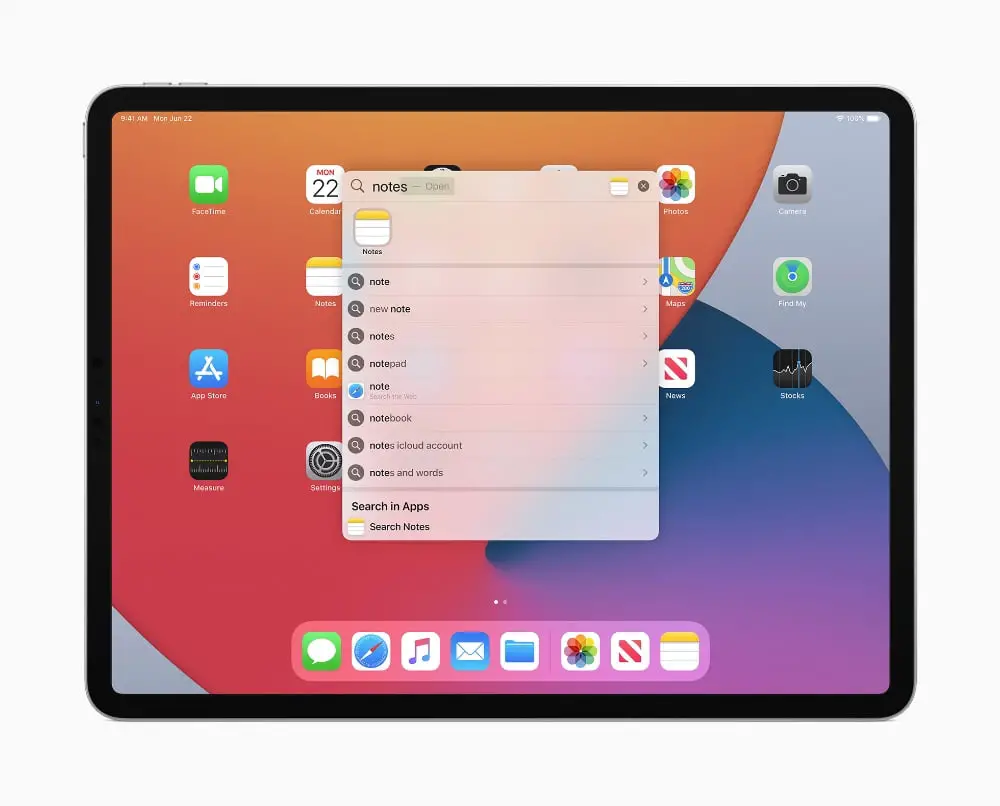
It seems that Apple has only just begun with Augmented Reality. Investments have been large, accumulating talent and technology. Let’s remember that it bought PrimeSense, the firm that developed the sensors of the Microsoft Kinect and other startups dedicated to AR such as Vrvana, Metaio, and Flyby Media. And it has new developments like Apple Glass underway, they say the most “secret” project in Cupertino.
Apple Magic Keyboard
Smart Keyboard Folio which is available for $219 for the 12.9-inch version ($199 for the 11-inch version) and it is a great option both for writing and to serve as a protective cover. In front of the Smart Keyboard Folio, we have the Magic Keyboard, which is priced at $339 for the 11-inch iPad Pro and $399 for the 12.9-inch iPad Pro.
The Apple Magic Keyboard has a high price, but if you are willing to make this outlay of money it is a good product. For starters, the Magic Keyboard is magnetically attached to the iPad Pro and allows you to adjust the viewing angle up to 130 degrees.
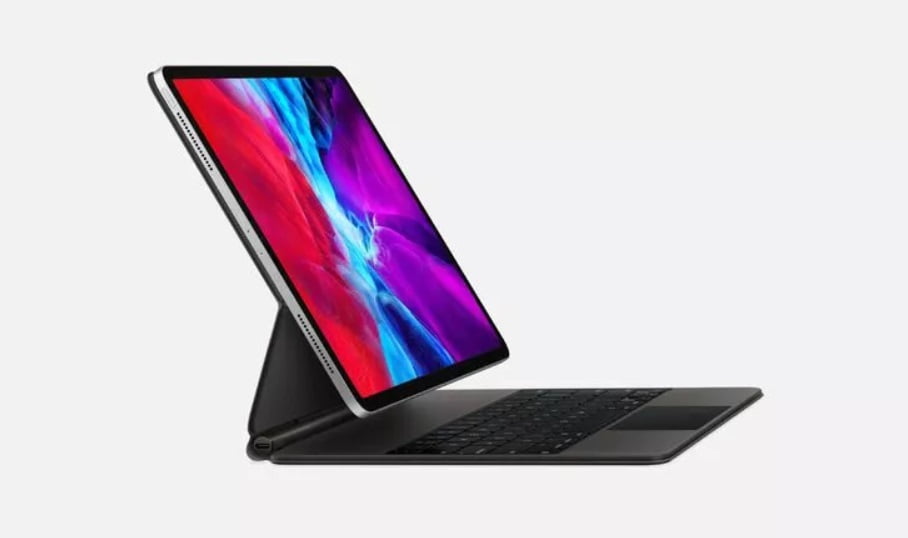
It is a standard-size keyboard with backlit keys and a scissor mechanism with a 1mm travel, so typing with it is as comfortable as with the keyboard of, for example, a MacBook Pro. As a great new feature, it incorporates an integrated trackpad that when using it we can see how the pointer transforms on the iPad Pro screen to highlight the elements of its interface. In addition, the Multi-Touch gestures that we are already used to also work on this trackpad.
Thanks to the USB-C port on the left side we can charge the iPad Pro, freeing up the USB-C port of the Apple tablet for accessories such as storage units or external monitors. In addition, when the Magic Keyboard is connected and closed, the microphones on the iPad Pro are disconnected so that the audio data is safe.
Magic Keyboard also works with the previous generation of iPad Pro, and the price to pay to use it is a little bit of hardship that comes with it. For example if you use iPad Pro in tablet mode, you must undock it from the Magic Keyboard, and the rigid keyboard does not allow you to fold it like the Smart Keyboard. In addition, we are talking about a weight of about 400 grams more than the Smart Keyboard Folio, so the combination of 12.9-inch iPad Pro plus Magic Keyboard is already near the weight of some ultralight laptops.
iPadOS
iPadOS was the big news in the software section of the WWDC 2019 developer conference. If until then all Apple tablets had used iOS, the Cupertino firm explained that they needed a new operating system to “recognize the distinctive iPad experience” and introduce new features beyond the development for iPhone. A strategy similar to that used when creating watchOS for your smartwatches or tvOS for living room entertainment.
The specific system for tablets began with iPadOS 13 and brought new features such as the new design of the Home screen; improved multitasking and split-screen functions; greater integration with the Apple Pencil stylus; new floating keyboard; easier text and image editing; faster Face ID unlocking and a good number of internal applications optimized for use on tablets, from the file manager to the Safari browser.
Apple has been updating the system until launching version 13.4, which is precisely the one that pre-installed this iPad Pro 2020 and which is now in 13.6. It is not a minor update. In addition to the corresponding bug fixes, functions such as iCloud shared folders, new Memojis or universal app purchase, the update includes a significant improvement for the use of peripherals with iPads, better mouse management, and, as a great novelty, support for trackpads.
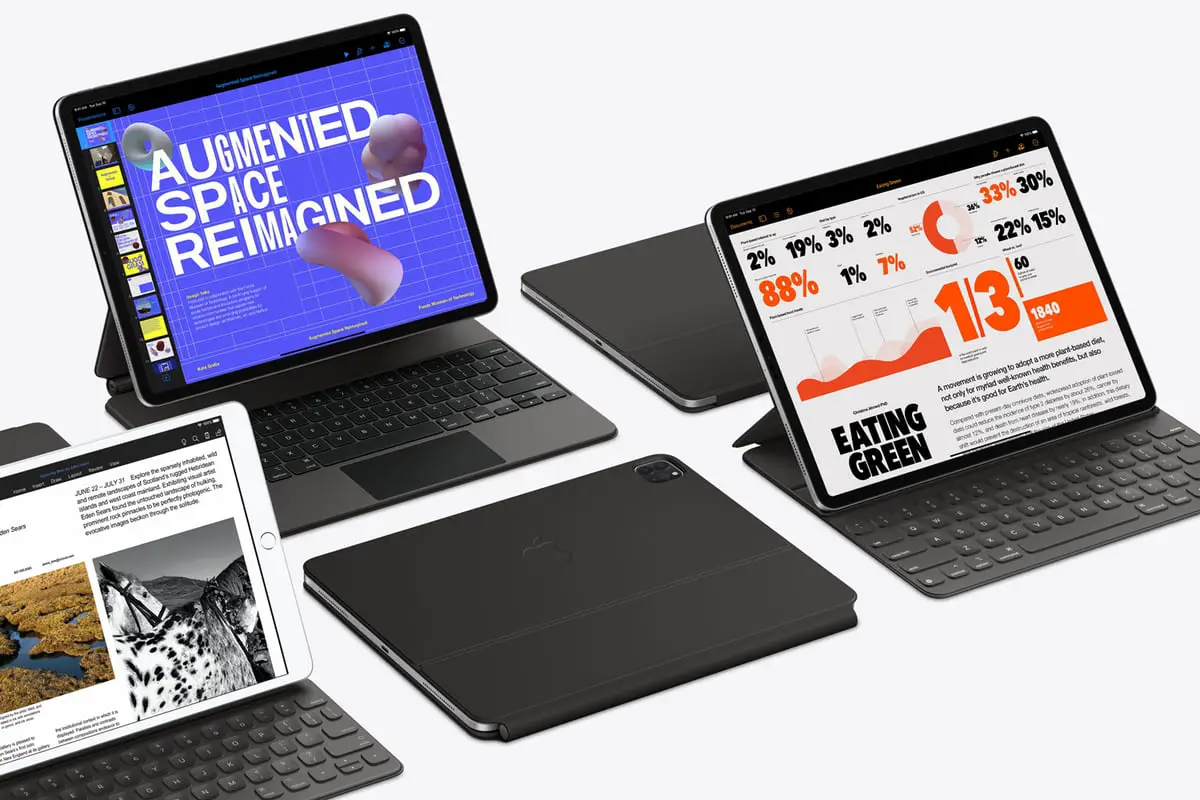
Compatibility with the trackpad that we use on keyboards is key to Apple’s strategy of positioning its tablets as a replacement for laptops. It has been designed specifically for the touch experience of the iPad, so the cursor appears as a circle that highlights apps on the home screen, in the Dock, interface elements and text fields, greatly facilitating tasks with documents, sheets calculating, editing or browsing with Safari, without having to touch the screen.
iPadOS 14
Apple released a preview of what’s new in the next major version of its tablet system in June. It is currently in beta testing and will be available next fall. Although the company announced “new features designed specifically for the iPad and custom applications,” its connection to iOS 14 remains evident, as well as some features borrowed from macOS.
In any case, it will come with interesting news, among which we can mention:
- Compact design for phone and FaceTime communications. Seeking not to interrupt the user’s work, incoming calls will not occupy the entire screen, they will be displayed in a discreet banner that will facilitate the answer or reject them and continue working.
Siri. Same compact design for the virtual assistant. It will appear at the bottom of the screen when activated so that users can consult the information and will disappear when opening other apps or controlling music. - Searches: The search function has been enhanced and it will be easier to find and open apps, access contacts, and files, search for information, refine web searches or consult answers to common questions about people or places. All this with the aforementioned compact design and without leaving open applications.
- Sidebars: Redesigned in many apps, they will allow browsing without losing sight of the content, and together with the optimization of the toolbars and the new drop-down menus they will give access to the controls of the apps in one place.
- Apple Pencil: Major enhancements to the stylus. The new “Handwriting” feature will allow you to write in any text field on the iPad regardless of the application by typing the text. Browser searches, new notes in reminders, and more aesthetic designs in drawings with another new function, “Smart Selection”, can be searched.
- Augmented Reality: The new ARKit 4 development kit presents new features such as a depth API that will make better use of the LiDAR scanner’s performance, a coordinate fixing system called Location Anchors, and improved facial tracking in both the rear and front cameras.
- Privacy: With the aim of improving transparency and control, the main novelty is that all apps will have to obtain the user’s permission before monitoring. In addition, the product pages of the App Store will display summaries in a simple and easy to understand format, submitted by the developers of their privacy practices.
iPadOS 14 features other new features for the Safari browser, widgets, accessibility, and a number of revamped apps. As I said, it is currently in the final phase of development, and the final version is expected next fall to update this iPad Pro 2020 and previous models of the tablet catalog for free.
Can an iPad Pro replace a laptop?
On the idea that an iPad “is not just a large iPhone”, Apple has long insisted that the iPad Pro has enough capacity to replace a laptop. And it is that Apple and Microsoft have been all this decade in a kind of guerrilla war in the field of marketing to see who takes the lead in the search for new formats that attract the consumer.
Microsoft has done it with the Surface Pro. Devices that have promoted a new category by themselves, that of the 2 in 1, which together with convertibles are the most attractive thing on the computing scene and are surely the most convincing alternative to Apple tablets, along with the little that It comes from Android in the high-end where – once Google took its Pixels off the market – only Samsung seems to be able to compete.
- How to make Chrome the default browser on iPhone? [iOS 14]
- iOS 14: all news, compatible devices and how to install it
- Family Settings: Details about the new Apple Watch feature
As for Apple, there is no doubt the great improvement that the “Pro” models have made in all fields: in screens, in performance, in cameras, and sensors.
If a few years ago Apple called tablets with keyboards “a mixture of toaster and refrigerator” and the ill-fated Steve Jobs had steadfastly refused to market them, as well as adding stylus, today the iPad Pro relies on keyboards (with trackpad included in the latest model) and in digital pens to convince users of their ‘laptop replacement’ capabilities.
And the software? iPadOS has been a step forward and what we know about version 14 will be another advance, but it is not the macOS that a MacBook Pro uses. Its core is still that of a mobile system and many of its applications are a copy of those it offers iOS, great for an iPhone, but perhaps short for a device that aspires to offer everything you need for a desktop.
iPad Pro 2020 is a fantastic device, in our opinion the best tablet on the market and deserving of our “Recommended Product” award, and ideal in some environments and for some users, but in general for computing uses the iPad Pro has a difficult time replacing to a laptop, be it Windows, Linux or the MacBook themselves.





